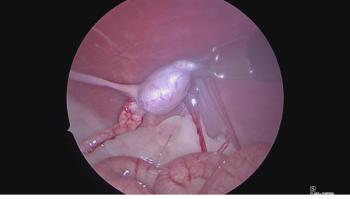
Pimobendan Delays Onset of Congestive Heart Failure in Dogs with Mitral Valve Disease and Cardiomegaly
A recent clinical trials shows that pimobendan delays the onset of congestive heart failure in dogs with mitral valve disease and cardiomegaly by a median of 15 months.
Pimobendan administration delays the onset of congestive heart failure by a median of 15 months in dogs with mitral valve disease and cardiomegaly, according to the results of a large clinical trial published in the
“When a typical mitral valve murmur is detected, vets should now investigate further to look for cardiac enlargement,” said lead author Dr Adrian Boswood in a
The
Nearly half (45.5%) of the 354 dogs included in the final analysis were cavalier King Charles spaniels. The median age of enrolled dogs was 9 years. Inclusion criteria were as follows:
- Age 6 years or older
- Body weight 4.1 to 15 kg
- Systolic heart murmur grade 3/6 or higher, loudest over the mitral area
- Echocardiographic evidence of advanced mitral valve disease
- Radiographic evidence of cardiomegaly
Dogs were excluded if they were receiving cardiovascular medications precluded by the study design, if they had specific signs of cardiovascular disease, or if they had diseases that might limit their life expectancy.
Dogs in the treatment group received chewable pimobendan tablets (Vetmedin, Boehringer Ingelheim) by mouth at the labeled dose (0.4-0.6 mg/kg per day, divided into two doses). Dogs in the placebo group received tablets visually indistinguishable from the pimobendan tablets to preserve blinding.
According to the authors, myxomatous mitral valve disease is the most common cardiac disease in dogs and progresses through four stages: A, at risk for developing mitral valve disease; B, mitral regurgitation but no signs of congestive heart failure; C, congestive heart failure; and D, congestive heart failure refractory to treatment. Stage B is subdivided into stages B1 (without cardiac enlargement) and B2 (with cardiac enlargement). The purpose of the EPIC study was to determine whether long-term administration of pimobendan to dogs in stage B2 would delay the primary end point, defined as onset of congestive heart failure, cardiac-related death, or cardiac-related euthanasia.
Almost half (45.8%) of the dogs included in the final analysis had reached the primary end point by the time the study was terminated. Dogs in the pimobendan group reached the primary end point by a median of 1228 days (41 months); those in the placebo group, by a median of 766 days (25.5 months). At any time point, a dog receiving pimobendan was about two-thirds as likely as a dog receiving placebo to reach the primary end point (hazard ratio, 0.64; 95% CI, 0.47-0.87). According to the authors, most dogs reached the primary end point by developing congestive heart failure, not by dying. They concluded that the benefit of pimobendan was a result of prolonging the time to onset of congestive heart failure.
The authors note that some dogs might have been incorrectly classified as having a cardiac (or noncardiac) cause for euthanasia or spontaneous death. Because the study population was large and because cardiac-related deaths and euthanasias were not significantly different between the two groups, they believe that this limitation had little effect on the results. Another limitation is that all dogs that developed congestive heart failure were subsequently treated with pimobendan, with no further restriction on other treatment. This treatment variability did not affect the major study conclusions, they say, but was a confounding factor in the calculation of all-cause mortality.
“The results of this clinical trial will change the way the most common cause of heart disease and heart failure in the dog is managed on a day-to-day basis by veterinarians around the world and contribute to dogs with MMVD [myxomatous mitral valve disease] living better and longer,” said study coauthor Dr Sonya Gordon in a
The study was funded by Boehringer Ingelheim Animal Health GmbH. One author is employed by Boehringer Ingelheim. All other authors have received funding from Boehringer Ingelheim for research, travel, speaking, consulting, or educational material preparation.
Dr. Laurie Anne Walden received her doctorate in veterinary medicine from North Carolina State University. After an internship in small animal medicine and surgery at Auburn University, she returned to North Carolina, where she has been in small animal primary care practice for over 20 years. Dr. Walden is also a board-certified editor in the life sciences and owner of Walden Medical Writing, LLC. She works as a full-time freelance medical writer and editor and continues to see patients a few days each month.
Newsletter
From exam room tips to practice management insights, get trusted veterinary news delivered straight to your inbox—subscribe to dvm360.




